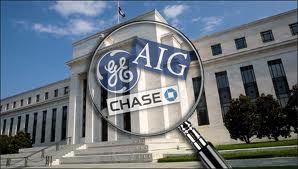
December 23rd marks the 100th anniversary of the Federal Reserve. Dissatisfaction with its track record has prompted calls to audit the Fed and end the Fed. At the least, Congress needs to amend the Fed, modifying the Federal Reserve Act to give the central bank the tools necessary to carry out its mandates.
The Federal Reserve is the only central bank with a dual mandate. It is charged not only with maintaining low, stable inflation but with promoting maximum sustainable employment. Yet unemployment remains stubbornly high, despite four years of radical tinkering with interest rates and quantitative easing (creating money on the Fed’s books). After pushing interest rates as low as they can go, the Fed has admitted that it has run out of tools.
At an IMF conference on November 8, 2013, former Treasury Secretary Larry Summers suggested that since near-zero interest rates were not adequately promoting people to borrow and spend, it might now be necessary to set interest at below zero. This idea was lauded and expanded upon by other ivory-tower inside-the-box thinkers, including Paul Krugman.
Negative interest would mean that banks would charge the depositor for holding his deposits rather than paying interest on them. Runs on the banks would no doubt follow, but the pundits have a solution for that: move to a cashless society, in which all money would be electronic. “This would make it impossible to hoard cash outside the bank,” wrote Danny Vinik in Business Insider, “allowing the Fed to cut interest rates to below zero, spurring people to spend more.” He concluded:
“. . . Summers’ speech is a reminder to all liberals that he is a brilliant economist who grasps the long-term issues of monetary policy and would likely have made an exemplary Fed chair.”
Maybe; but to ordinary mortals living in the less rarefied atmosphere of the real world, the proposal to impose negative interest rates looks either inane or like the next giant step toward the totalitarian New World Order. Business Week quotes Douglas Holtz-Eakin, a former director of the Congressional Budget Office: “We’ve had four years of extraordinarily loose monetary policy without satisfactory results, and the only thing they come up with is we need more?”
Paul Craig Roberts, former Assistant Secretary of the Treasury, calls the idea “harebrained.” He is equally skeptical of quantitative easing, the Fed’s other tool for stimulating the economy. Roberts points to Andrew Huszar’s explosive November 11th Wall Street Journal article titled “Confessions of a Quantitative Easer,” in which Huszar says that QE was always intended to serve Wall Street, not Main Street. Huszar’s assignment at the Fed was to manage the purchase of $1.25 trillion in mortgages with dollars created on a computer screen. He says he resigned when he realized that the real purpose of the policy was to drive up the prices of the banks’ holdings of debt instruments, to provide the banks with trillions of dollars at zero cost with which to lend and speculate, and to provide the banks with “fat commissions from brokering most of the Fed’s QE transactions.”

